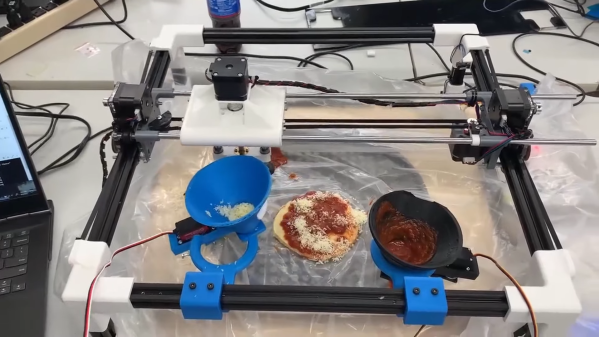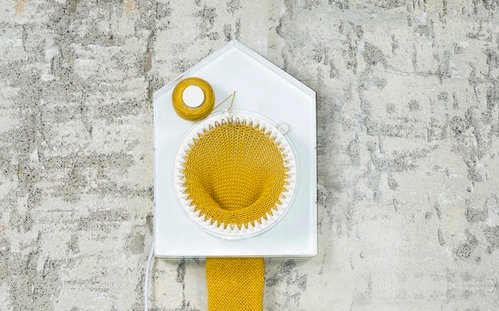Remote working has become so normal that even important meetings are now routinely held online. But for those working from home there’s always the risk of pets or flatmates entering the room right when you’re in a heated argument with your boss or presenting your results to an important client. To overcome this problem, [Hans Scharler] designed a system that lights up a big “ON AIR” sign whenever he’s in an online meeting. Although his cat might still disregard it, any human housemates will now know not to disturb him.
 [Hans] built a similar device out of spare parts back in 2020, but completely redesigned it to make a more robust version. The basic idea is simple: the sign is illuminated whenever [Hans]’s webcam is enabled, as he is then presumably in a meeting. A few lines of Python code detect the webcam’s state and send the result to ThingSpeak, an IoT service that can be hooked up to various types of gadgets. In this case, the online service sends a signal to an ESP32 hidden inside the sign to turn on an LED string. Those LEDs consume very little power, so they can be driven directly from one of the ESP32’s GPIO ports.
[Hans] built a similar device out of spare parts back in 2020, but completely redesigned it to make a more robust version. The basic idea is simple: the sign is illuminated whenever [Hans]’s webcam is enabled, as he is then presumably in a meeting. A few lines of Python code detect the webcam’s state and send the result to ThingSpeak, an IoT service that can be hooked up to various types of gadgets. In this case, the online service sends a signal to an ESP32 hidden inside the sign to turn on an LED string. Those LEDs consume very little power, so they can be driven directly from one of the ESP32’s GPIO ports.
The whole system is powered by a 5V USB power supply and can be placed on a shelf or mounted on a wall, giving your room a bit of a vintage radio studio vibe. Modern IoT services make this kind of project much easier than before: back in 2011, [Matt] probably had to write a lot more code to make a similar Arduino-powered light work.


















